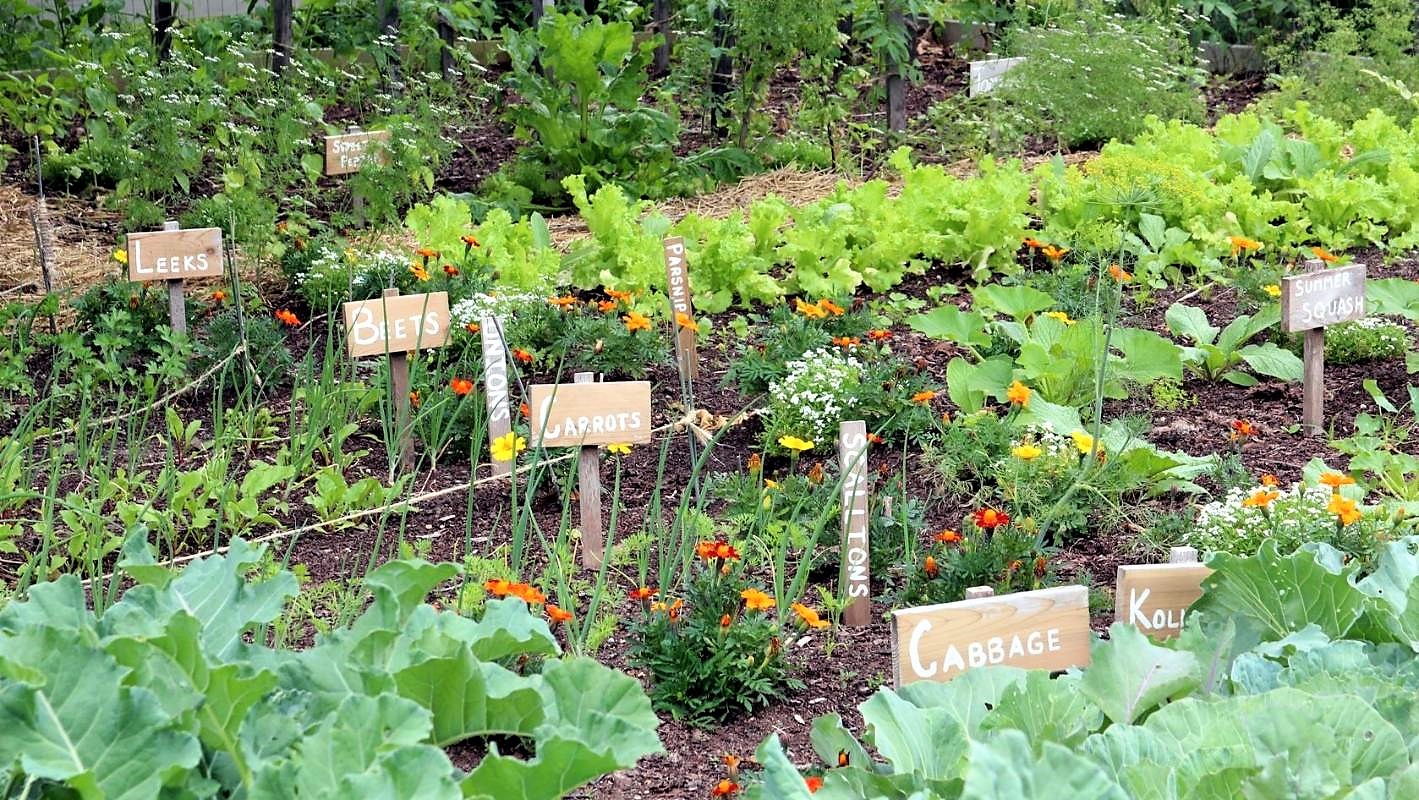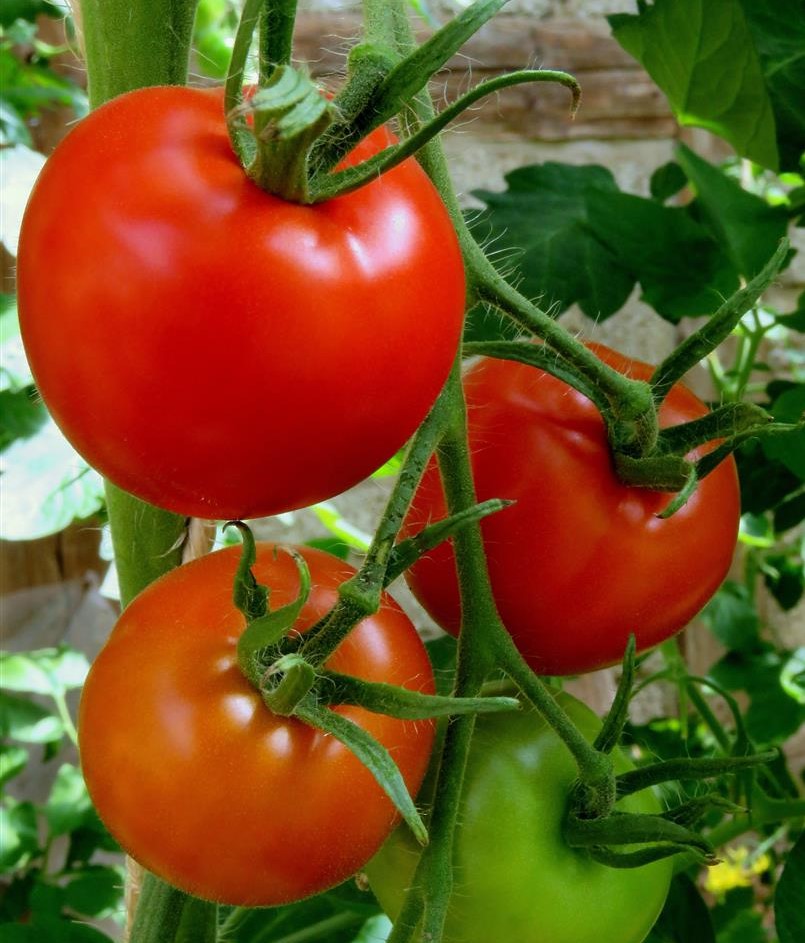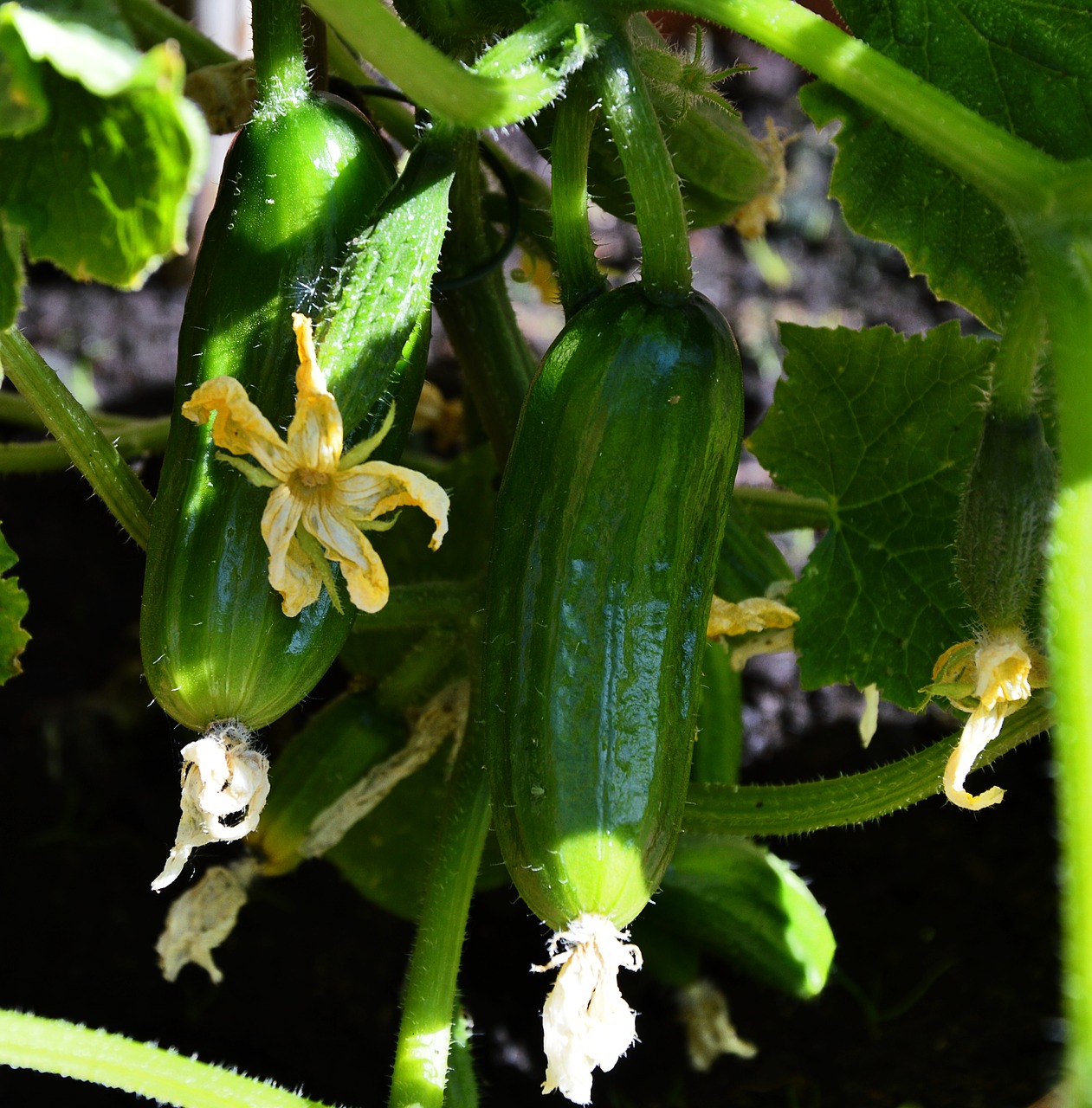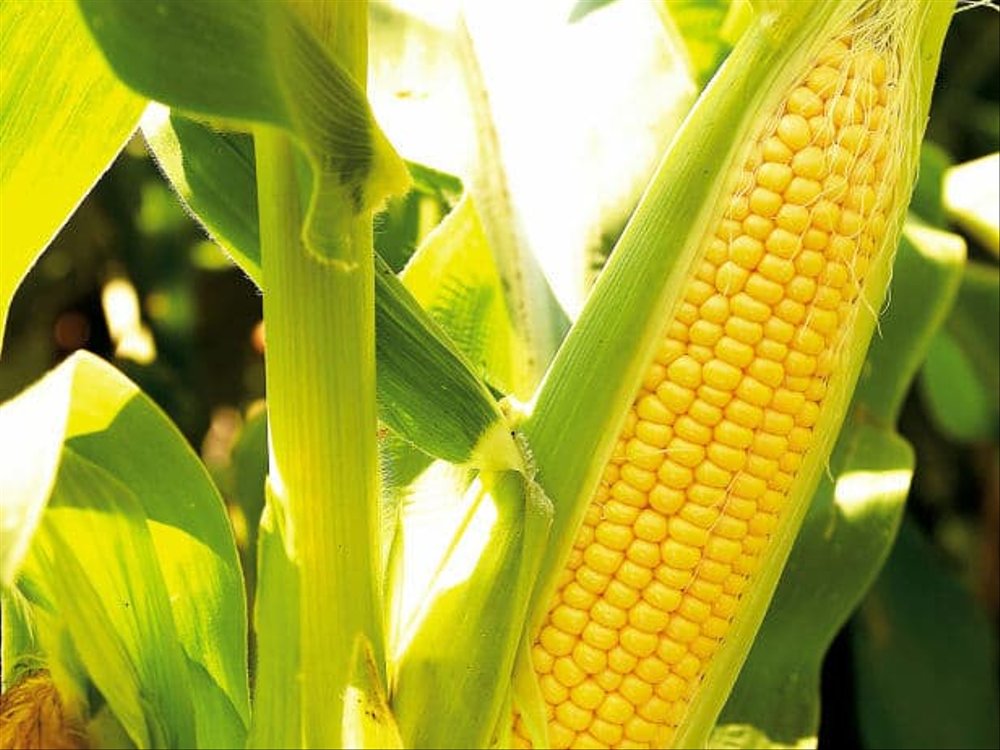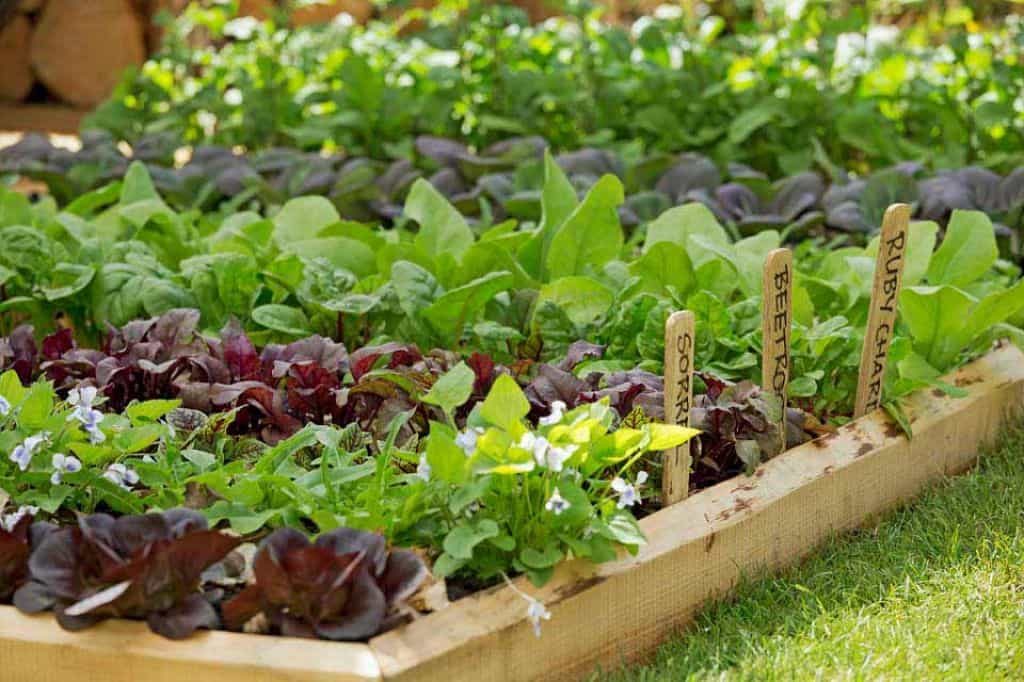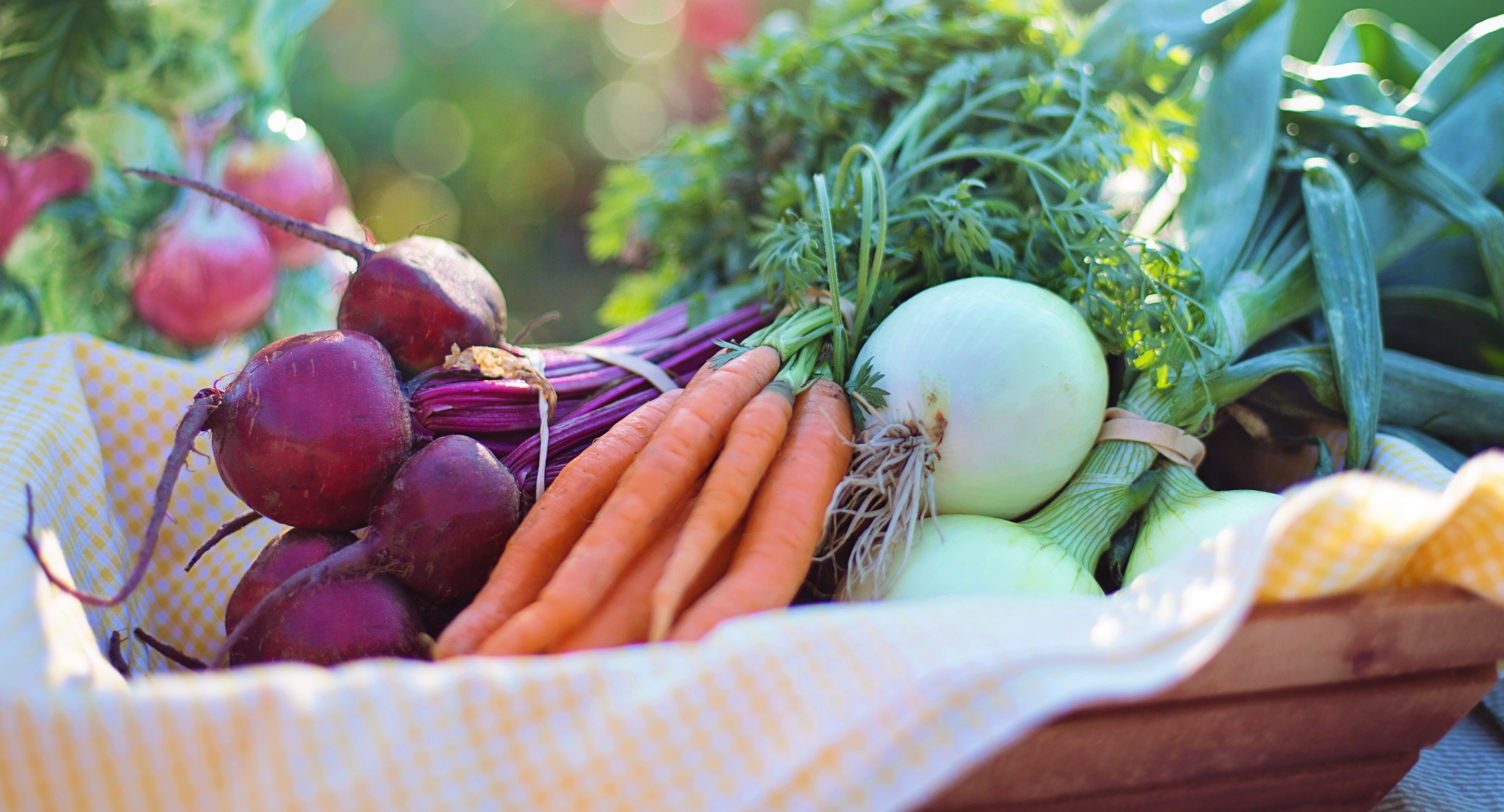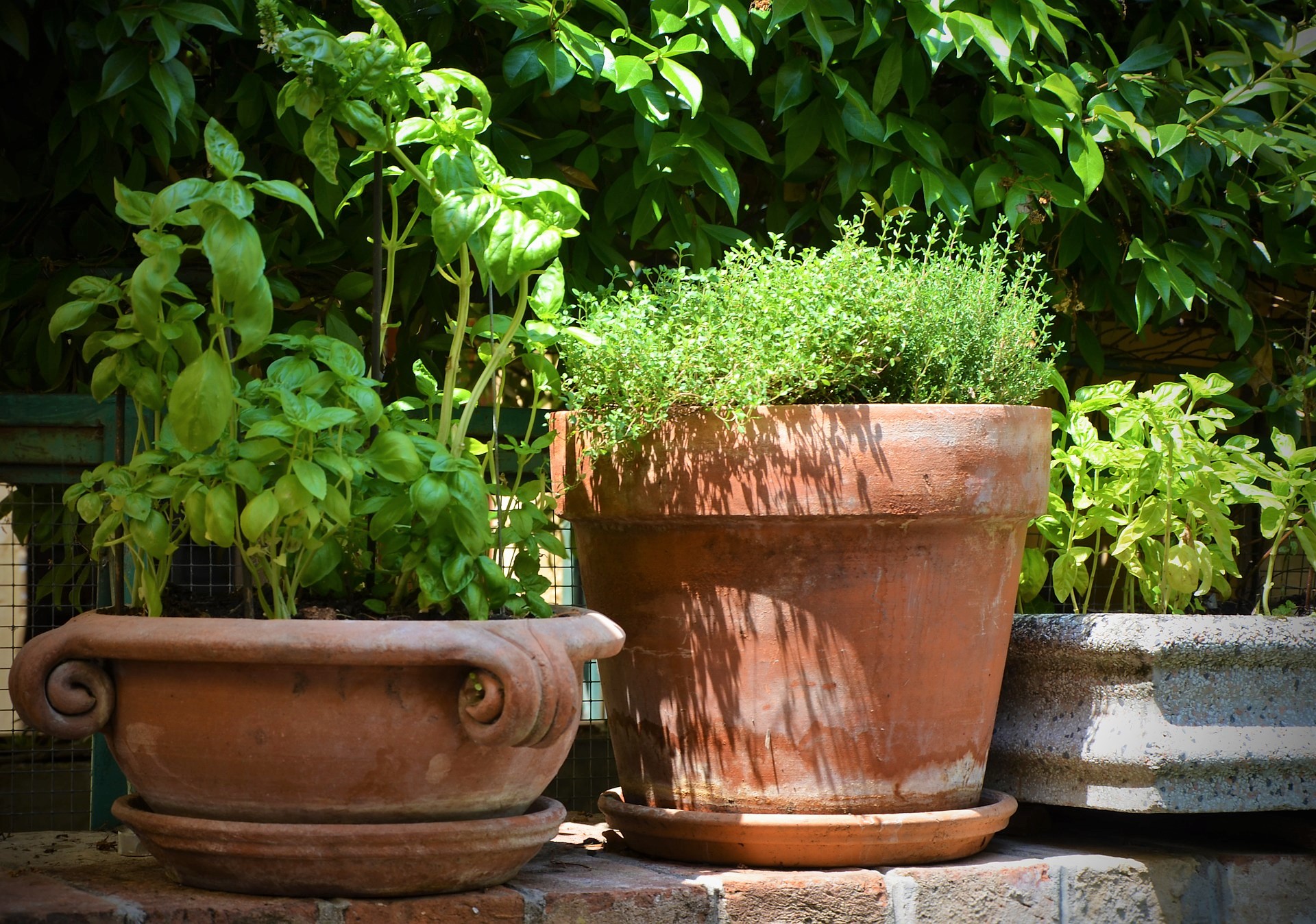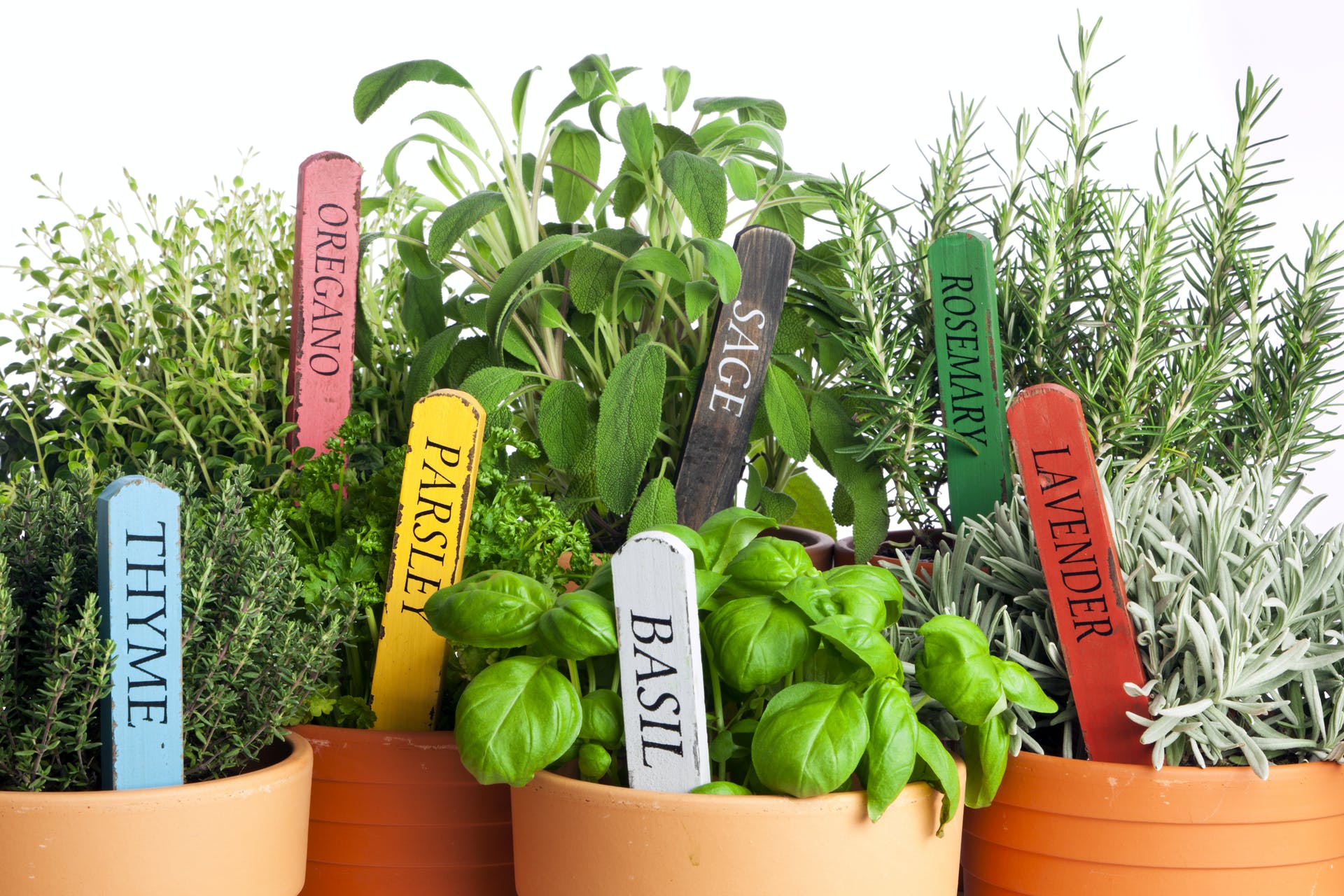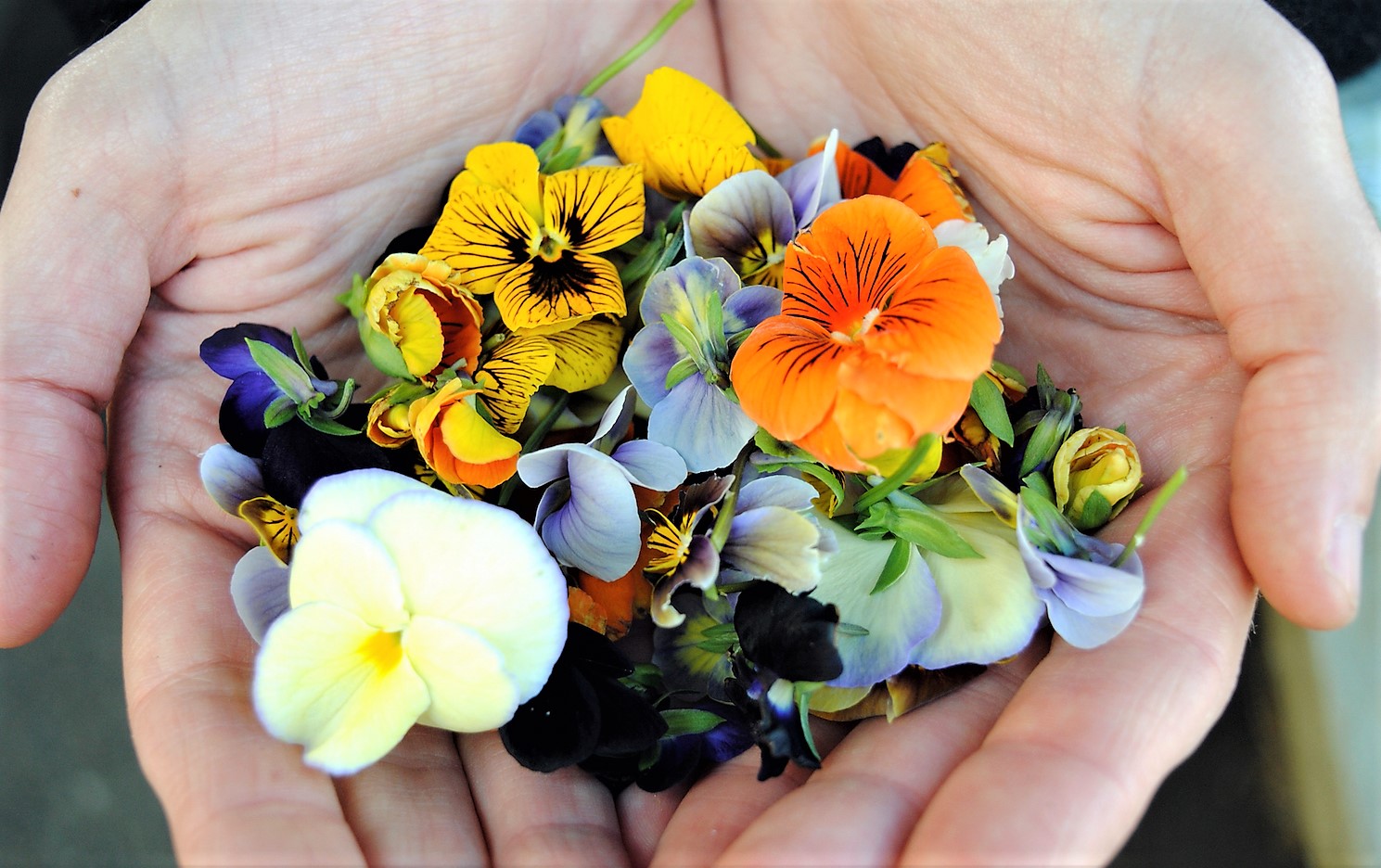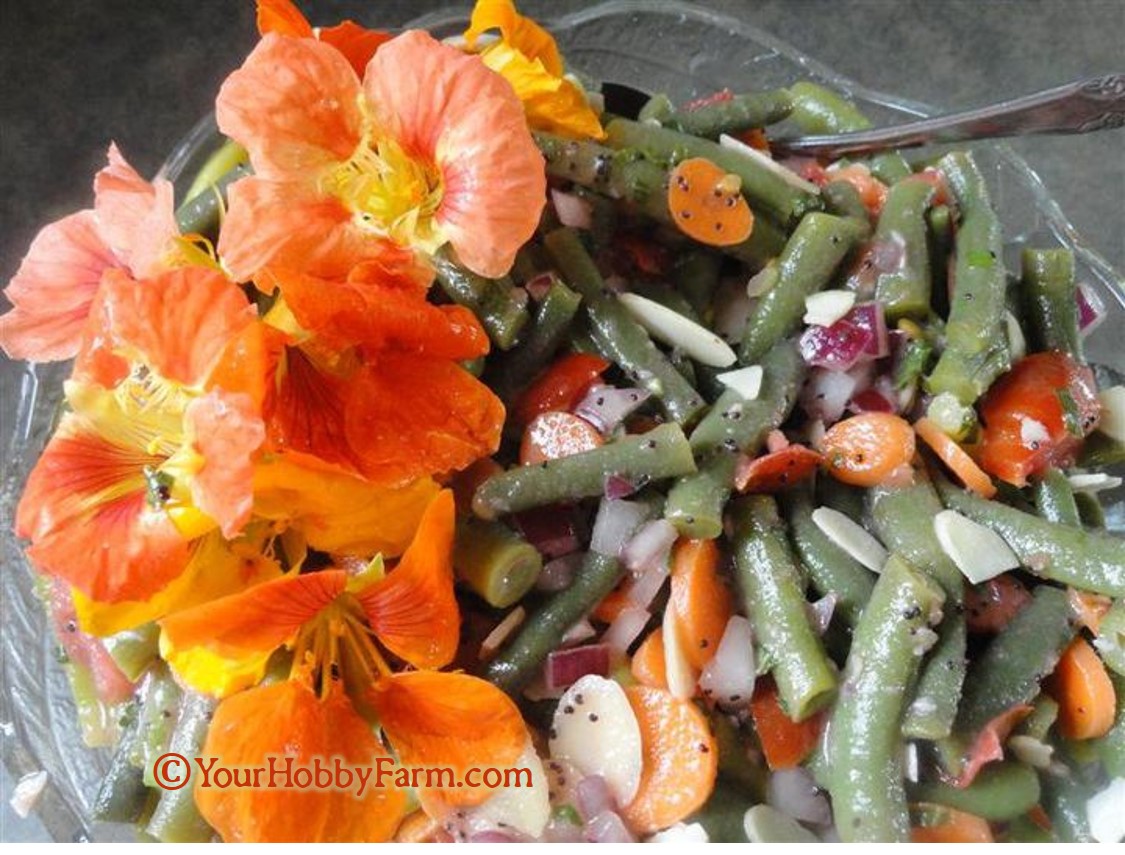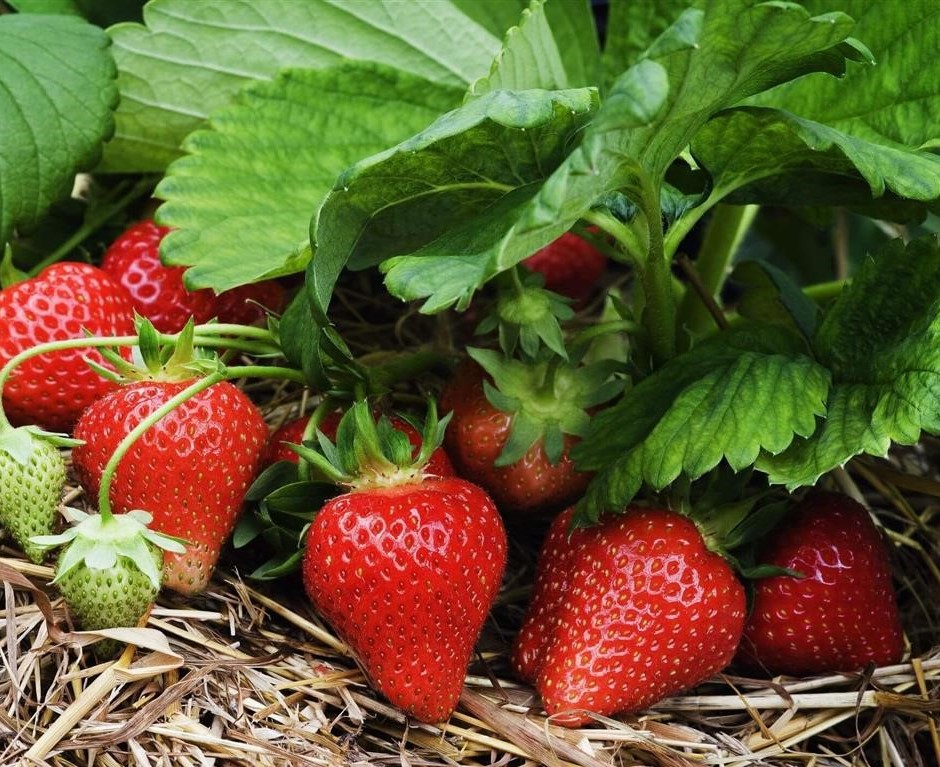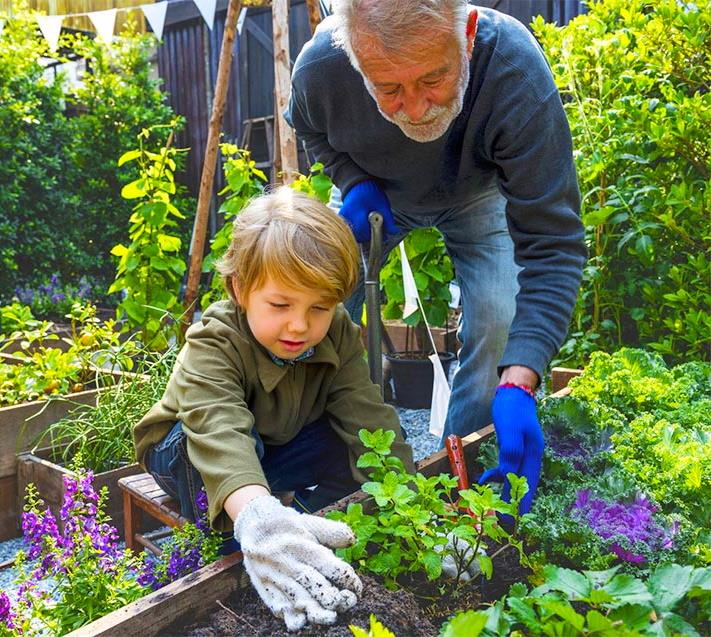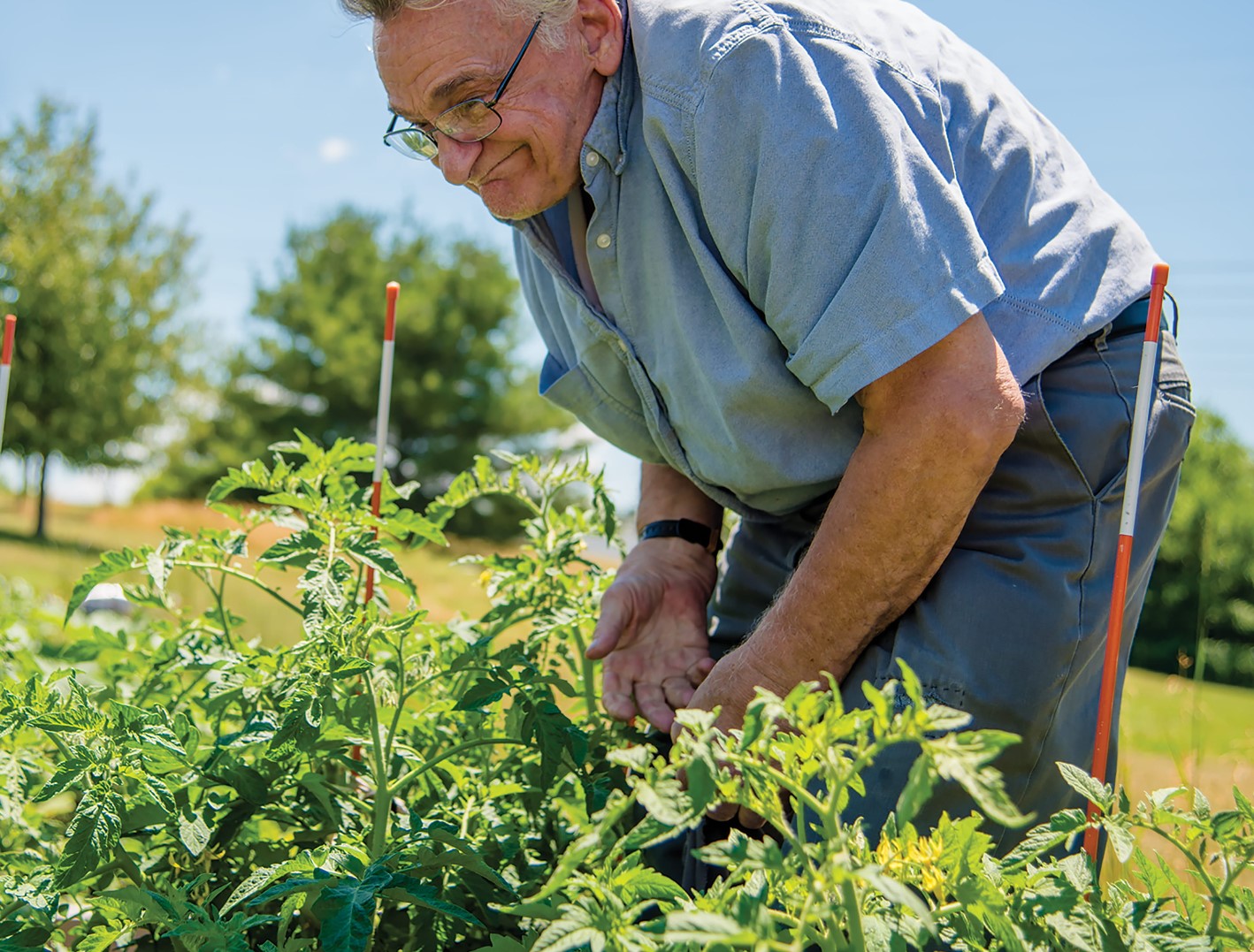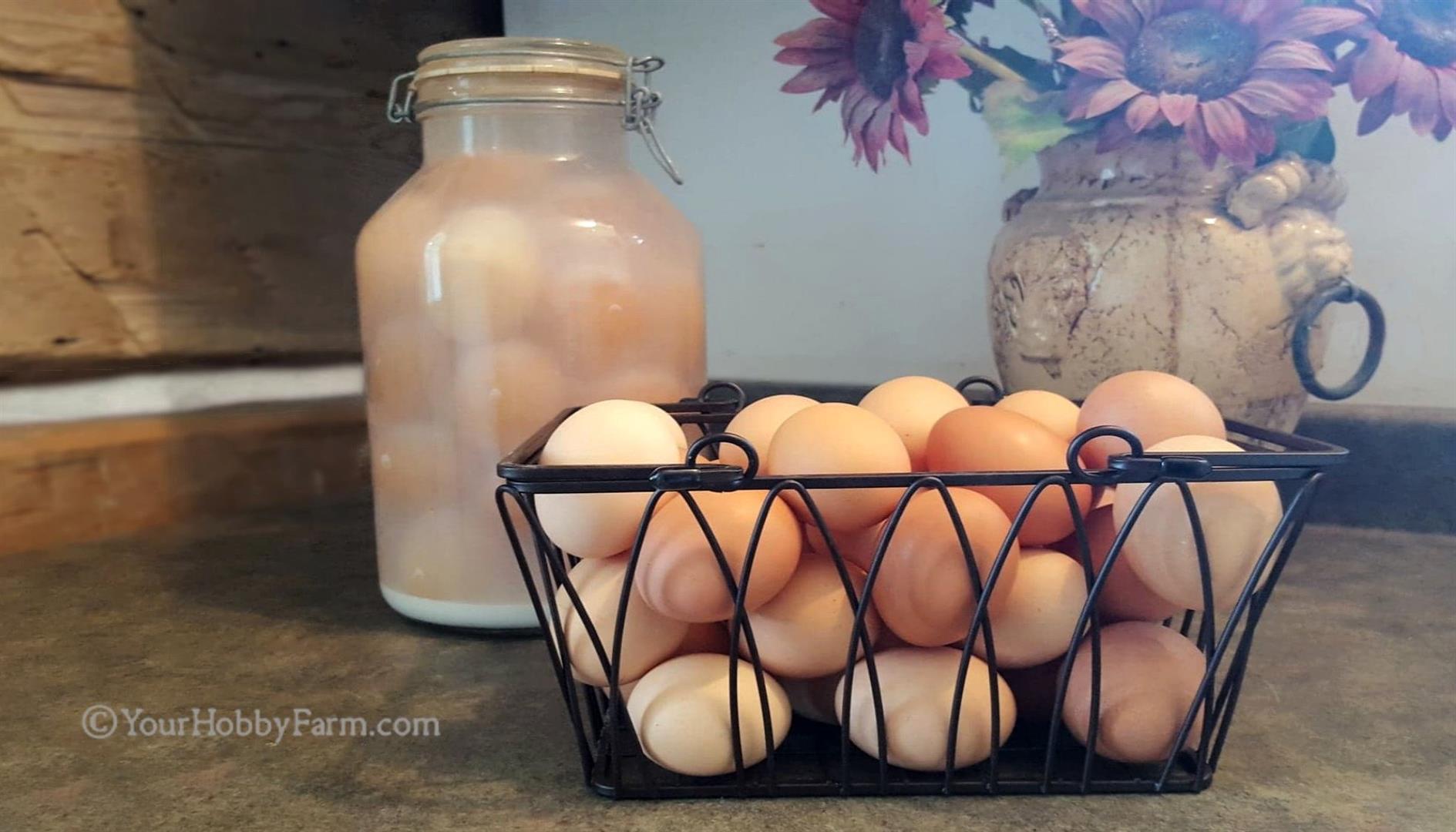Fresh From the Garden
There's nothing quite like gathering your own food, fresh from the garden! Homegrown garden goodness provides a delicious, healthy way to support sustainability. Gardening enables you to grow what you eat, eat what you grow, and enjoy the well-deserved satisfaction of your labors.
Whether from an urban balcony or a sprawling county plot, your garden's bounty served fresh or preserved, boosts self-sustainability, health, and joy.
Whether grown in urban balcony containers, a little plot tucked into a corner of your backyard, or from a large country garden, there's nothing quite like garden fresh produce. The ability to step out your back door and gather fruit, vegetables or herbs from your garden as needed ensures the highest quality of your produce.
Vegetable Garden Favorites
Dew dropped, sun kissed, and vine ripened... The fresh from the garden goodness and nutrition that comes only with the harvest from your own homegrown garden is as good as you can get. Let's look at just a few garden favorites...
Tomatoes are the most popular vegetable grown in the home garden or in containers. There are many different varieties to choose from! Whether big juicy red tomatoes or dainty little cherry tomatoes, plum tomatoes and Romas, and in a variety of colors that include yellow, orange, pink, and purple. Whatever the color, shape or size, there's nothing quite like a juicy, vine ripened tomato fresh from the garden! For a fun page about tomatoes check this out: Pictures of Tomatoes and a Whole Lot More!
Often tomatoes give a generous yield. After you've eaten your fill of fresh tomatoes, you might be wondering what to do with your abundant crop. Sometimes after making sauces, salsas, or spaghetti sauce, there are still more tomatoes. You can preserve them by canning, freezing, roasting them and packing them in oil. You can also dehydrate tomatoes, and then if you'd like, make tomato powder out of your dry tomatoes!
 A lovely variety of bush bean fresh from the garden.
A lovely variety of bush bean fresh from the garden.Green beans, and of course, yellow wax beans, and royal purple and burgundy string beans. Mainly just color and shape separate these types of beans from another. They can be enjoyed raw, steamed or roasted. Which way you grow them, vertically with vines growing up poles, or in bushes close to the ground, is a matter of preference. There are so many ways to enjoy beans! Roasted Garlic Parmesan Green Beans is one yummy way to serve them. Preserving them by canning or freezing enables us to enjoy them throughout the winter as well.
Cucumbers are available in a wide variety and are easy to grow. Some types grow on bushes and others on vines. The bushes are compact, sprawling a bit on the ground. These grow well in containers. Vining cucumbers require a pole, trellis, or other type of support because, as they grow, their tendrils search for and wind around anything to cling to for support. Varying widely in shapes and lengths, some are long and thin and other are short and plump.
Cucumbers can be served sliced in in salads enjoyed fresh from the garden. Many of these varieties can be preserved by pickling them. Dill pickles, sweet pickles, and a wide array of relishes and salsas are favorites ways of preserving them. Or how about making cucumber chips in the dehydrator. And cucumber jelly, sweet and tangy, pairs nicely with savory meat dishes or simply served with cheese and crackers.
Bell peppers, in vivid green, yellows, oranges and reds, are also part of the fresh from the garden bounty. Sweet, crunchy peppers are very easy to grow, either in a garden or in containers on the porch or balcony of an apartment. They are very nutritious, high in vitamins C and A, as well as loaded with various other vitamins and minerals.
Sweet peppers are often enjoyed raw. They can be sliced up and eaten as a healthy snack, dipped in hummus, or tossed into a salad. They can also be roasted, stuffed, sautéed... They add flavor and even texture to so many dishes!
Bell peppers can also be preserved for use long after colorful autumn leaves have covered your garden. There's nothing much easier than dicing or slicing these sweet peppers and freezing them. All winter long you can take out the amount you need from the freezer to add to a wide variety of dishes. You can also preserve bell peppers by dehydrating them. Afterwards, if you'd like, you can powder the dehydrated peppers and use them to nicely flavor many dishes as well. Bell peppers can also be canned, pickled, or roasted, then packed in olive oil.
Sweet Corn is another summertime vegetable garden favorite and is delicious especially when eaten fresh from the garden. Corn is a nutritious grain that is rich in fiber and many vitamins, minerals, and antioxidants. Corn is typically yellow or yellow and white, but like other vegetables, it can be a variety of other colors, such as red, orange, purple, blue, white, and black.
Sweet corn can be easily frozen and enjoyed in the winter. Corn can be canned or pickled and made into corn relish. as well. It can also be dehydrated and the kernels eaten as a snack, reconstituted and added to soups and other dishes, or ground into homemade cornmeal. And who doesn't love a bowl of buttery hot popcorn! Imagine the yumminess of your own dried corn from your garden!
Squashes also come in a wide variety of types, shapes, sizes, and colors. Not only are some varieties of squashes harvested as summer squashes, but you can grow winter squashes as well which are grown in the summer and keep longer to be enjoyed in the winter.
Favorite summer squash varieties include zucchini, yellow crookneck, and scallop squash. Some flavorful types of winter squash include mouthwatering Butternut, large, thick-skinned Hubbard, and stringy-meated Spaghetti Squash. Pumpkins, a real fall favorite, are also a type of winter squash.
Luscious Leafy Greens
Leafy vegetables are easy to grow whether in your kitchen garden, raised garden box or in easy to reach back porch containers!
What are some of your favorites? Do you grow a variety of leafy garden greens? An assortment of lettuces, endive, and spinach? How about collard greens, swiss chard, kale or beet greens?
Have you tried growing watercress, arugula, or mustard greens? Or how about green or red cabbages, Bok choy, or Napa cabbage? Leek leaves, spring onions and scallions are also tasty additions to many soups or savory dishes and taste especially palatable when gathered fresh from the garden!
Hidden Treasures: Discovering Our Roots
Root vegetables are those delicious, nutritious treasures which form in the earth, hidden beneath the surface of the garden. What an amazing variety of root veggies there are!
Most commonly grown are carrots, radishes and beets. And parsnips, turnips and rutabagas are grown in many gardens. There are also many types of onions, scallions, leeks, and garlic that are easy to grow.
Other underground edibles in the form of tubers and rhizomes that we enjoy are vegetables like potatoes, yams and sweet potatoes, depending on your growing zone.
Ginger, which can be grown indoors in colder climates, and turmeric are rhizome vegetables. These like so many other of the root vegetables not only add tastiness to the menu, and they also have powerful medicinal uses.
Herbal Favorites: Mouthwatering and Medicinal
Herbs add a generous sprinkle of goodness to our lives through their verdant fragrances, unique flavors when added to our foods, as well as in their many amazing health benefits!
Enjoyed as flavorings, medicinally, or in teas, whether fresh, dried, or frozen, humble herbs add a wonderful sparkle to life!
Herbs are easy to grow and some come back year after year. Depending on where you live, some herbs do better when they're brought indoors for the winter. They thrive in pots and containers as well as the kitchen garden plot.
As the phrase of the old song comes to mind, "parsley, sage, rosemary and thyme", my mind wanders into my own herb garden... Which are your preferred herbs?
There are so many to choose from! Here are 10 favorites, not in any particular order. I'm sure you can add many other delectable herbs to this list...
- Basil - its crisp flavor pairs nicely with tomatoes providing healthful benefits as well.
- Oregano - delightfully savory, and so medicinal - the highest antioxidant content of herbs.
- Thyme - savory in flavor as well as anti-microbial and rich in antioxidants.
- Parsley - often used as a garnish but very nutritious, high in vitamins and folic acid.
- Chives - this pungent flavored herb is a cousin to onions and garlic, and similar in flavor.
- Dill - pairs tastefully with many different dishes and has anti-bacterial properties as well.
- Stevia - amazingly sugary to the taste yet containing no sugar. I've grown stevia, dried the leaves, for use as a sweetener for herbal teas.
- Mint - in its many varieties, adds a refreshing zing... It's best grown in a container as it can be invasive.
- Rosemary - aromatic, distinctive herb with a sweet, resinous flavor and medicinal to boot!
- Sage - perfect for flavoring chicken or fish, reduces inflammation, and is high in vitamin K.
Herbs that you've harvested fresh from the garden can be dried. They can also be frozen for future use. I've quickly blanched dill then froze it to retain its lovely green and fresh taste to be enjoyed in the winter! Another way to preserve herbs is to add them to an oil for flavor. This can be frozen as well.
Fresh Fancy Floral Foods
Edible flowers add a wonderful touch of flavor and beauty to many different dishes! Pictured below is an example of how I had dressed up a salad a few years ago by adding a few lovely nasturtiums. Their warm, peppery flavor complimented the veggie salad nicely.
There are many edible flowers! But always be sure to research before eating a flower if you're not perfectly sure about it. It's always better to be safe than sorry!
Here are 10 of these lovelies and there are many others besides these! Like the herbs, many of these have various other benefits besides their beauty.
- Nasturtiums - beautiful, bright blossoms with a warm, peppery flavor adds a gentle piquant when used as a garnish in salads or other dishes. The entire plant is edible, rich in nutrients. Also good for pest control.
- Lavender - ambrosial scented lavender is incredibly versatile for cooking. Use fresh, dried or frozen. The leaves and stems of lavender plants can be used for culinary purposes as well. Its oil may help alleviate insomnia, depression, anxiety, and stress.
- Violets - flowers and leaves are edible, leaves containing a high level of vitamins A and C. Add to salads or cook as greens. Violet flowers can be made into jellies, candied, or tossed into a salad. Delicately fragrant, fresh from the garden or wild in the woods.
- Echinacea - also known as 'coneflowers', these flowers are not only lovely, but very medicinal as well. High in Antioxidants, also believed to improve immunity, blood sugar, anxiety, inflammation and skin health.
- Cornflowers - hinting the aroma of pepper and a flavor and a touch of sweet spice, this flower adds glam and zip to salads, omelets, and pasta dishes. It's tea can improve digestion, its high antioxidant content aids in detoxifying the liver.
- Forget-me-not - the flowers are the edible part. Eat them freshly picked, toss them in a salad, or use them to decorate desserts or as a garnish.
- Honeysuckles - sweet like honey, these nectar-filled, anti-inflammatory flowers are both enjoyable to eat and medicinal as well.
- Pansies - use as a garnish or just pop the flower into your mouth and chew. You'll first taste the nectar's sweetness followed by a bold, peppery tang. They have antioxidant and anti-inflammatory properties.
- Lilac - from the olive family, lilacs can be eaten as well. Add them for color to a fruit dish, use them to season scones, or mix with cream cheese to create a tasty dip.
- Sweet Alyssum - young leaves, stems and flowers add pungency to salads and other dishes. Medicinally used as an as an astringent and diuretic.
Added to a vegetable salad or leafy greens, flowers add a pop of color. Try incorporating them as part of the decorations on a lovely cake or place a single blossom to float atop a glass of delicate, sparkling wine. Freeze blossoms in ice cubes or fold petals into homemade ice cream. Pursue any avenue your creativity may lead you, experiment and have fun! How can you go wrong when adding a touch of these blooming edibles obtained fresh from the garden!
Many of these flowers can be preserved by drying to later sprinkle over a dish for garnish. Dried nasturtiums add a lovely dash of color when sprinkled on top a potato salad. Some flowers are candied or made into jellies.
Please be aware! Not all flowers are edible. Some can be poisonous. And while some types of flowers are fine, other strains of the same types of flower are not edible. it is important for you to make sure for yourself if they are edible or not before eating them.
Flavorful Fruit, Fresh from the Garden
There are delicious fruits that can be grown in the garden as well! Depending on where you live, the types and varieties of these sweet treats will definitely vary.
Who can resist fresh from the garden berries? Strawberries, which are available in a wide variety, are certainly favorites. There are bush and cane berries as well, such as blueberries, blackberries, raspberries, and currents.
You can enjoy delicious melons off sprawling vines in a several varieties! Among them are watermelons, cantaloupes and honeydews and muskmelons.
A climbing grape vine is another lovely addition to a garden, providing you with it's luscious bounty year after year.
And there is a multitude of sweet fruit bearing trees to be had as well! Apples, pears, peaches, nectarines, apricots, mulberries and so many more! And while you're at it, why not consider growling some nut trees as well!
Perennials: Plant Them Once and Enjoy Them Yearly
Perennials are excellent additions to an edible garden! You plant them once, take good care of them, and enjoy them for years to come. Among the many perennial food producing plants, there are:
- Asparagus
- Artichoke
- Rhubarb
- Berries: like strawberries, raspberries, blackberries, blueberries and others
- Grapes
- Garlic
- Chives
- Leafy Herbs
- Fruit bearing trees
Some perennials, like asparagus, are a bit slow to establish, while other perennials blossom and yield yummies the first year. Over time, perennials provide a reliable annual harvest. They are usually lower maintenance. Not only do they save you time once established, but many perennial edibles build up the soil in which they live with their root systems and by annually shedding their foliage for decomposition. Once in place, you can plant the rest of the garden around them.
Gardening with "Little Sprouts"
Gardening is an excellent activity for children of all ages! To instill a love for gardening into a child is to gift them with a blessing that lasts a lifetime.
There are so many benefits to gardening with kids. It's an activity that can be easily altered to fit the child's age and abilities. It's wonderfully educational. Think of all scientific concepts you can discuss with a child when planting and tending to a garden! It's excellent exercise, helping them grow in motor skills.
When included in simple gardening activity, children can gain a real sense of accomplishment and enjoy sharing the fruit of their labor that they harvest fresh from the garden.
Whether the child is yours or someone else's, gardening is a way to build bonds with children and create memories from your experiences in the garden together.
After Gardening, You'll Come in Feeling Fresh from the Garden!
There's just something about gardening... Yes, it can be hard work, but it can also refresh you, body, soul and spirit. When we put time and energy into gardening, it gives back in so many ways!
There are many benefits of gardening. It provides nutrient-filled fruit, vegetables and herbs which are important for your health. Rich soil, sunshine, rain, and fresh air add to the vitalizing vitamin content of your fruits and vegetables. Eating produce fresh from the garden reduces the risk of consuming foods contaminated by harmful chemicals. You planted it and tended it, and you know that what you're eating is pure and fresh.
Gardening is a natural stress reliever. Getting out into the fresh air and sunshine is healthful and rejuvenating. It can improve your mood and bring joy knowing that you're creating your own little space on earth that will nourish you and your family. In each stage, as you prepare your garden, plant it, tend it, watch it grow, and harvest it, you gain a sense of satisfaction and accomplishment.
Gardening can be a workout. The physical activity of pulling weeds, planting, and digging can be compared to playing tennis or dancing and can burn up to 400 calories per hour. Designing and tending to the garden also provides mental exercise and keeping your mind aware and active. Simply gardening barefoot can massage your feet, further reducing muscle pain, tension, stress.
The benefits of gardening go far beyond what you grow! After time spent there, you will come in feeling fresh from the garden.
KV (9-16-2020) 17038-4010-4249
Translate This Page!
Traduire Cette Page!
¡Traduzca Esta Pagina!



Piping Rock©
Bringing you the highest quality In hundreds of health care and life-enhancing natural products at the
lowest cost to you!
high reviews, crazy deals,
happy, healthy customers!
Click here and save today!
Business Appreciation
* This website is not affiliated with
Piping Rock

Supporting our local feed mills
Meunerie Alexandria Milling
613-525-1973
Great Products • Great Prices
Great Service
Click the pic for their
facebook page!
Meunerie Alexandria Milling
Established in 1962 by The Massie Family
Email: Alexandriamilling@hotmail.Ca
475 Massie Crescent
Alexandria, Ontario, Canada
~~~
Small Business Appreciation
* This website is not affiliated with
Meunerie Alexandria Milling

